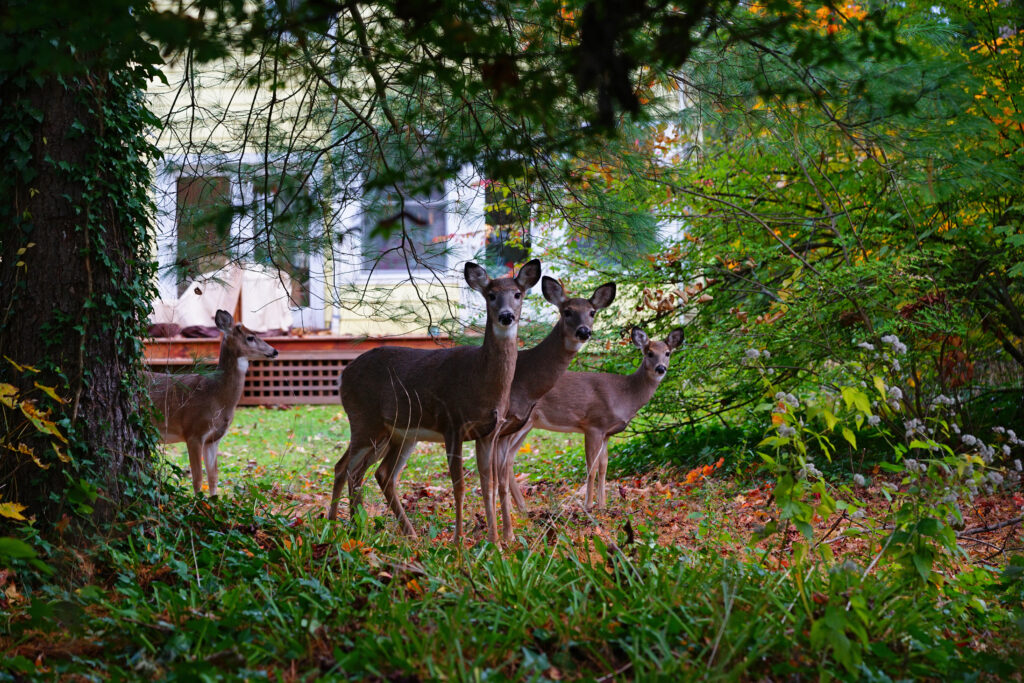Brought to you by The Wireless Deer Fence®
Feeding deer is a hotly debated topic among various groups. To control Chronic Wasting Disease and for other reasons, feeding deer is illegal in New York and other places. Feeding deer is not the same as baiting deer. Baiting deer to draw them into an area or to keep them in an area for the purpose of killing them is illegal almost everywhere.
In an idyllic world, it would probably be a bad idea to feed deer. If the deer population were at a level undisturbed by humans then feeding deer would cause problems like attracting deer into the area or congregating deer into one spot. Presently though, the deer population is excessive in many areas, and the reality is that many thousands of deer are trapped within towns and cities. Because deer are already congregated and they are trapped, often without sufficient feed, feeding them is humane and will indeed help to protect the surrounding yards and gardens.
Who Feeds Deer?
- Urbanites and suburbanites feed deer to keep them around to see them and to take photographs.
- Cities and organizations maintain winter feeding areas for deer.
- Hunters, illegally, feed deer to keep the herd around for hunting season.
- Gardeners feed deer to divert them from their yards and gardens.
Objections to feeding deer include that supplemental feeding of deer will disrupt their natural movement to winter areas. Again many deer are in an unnatural situation: trapped in the same place all year.
Another objection to feeding deer is that it will increase aggression between them. Actually, except during the rut, deer are often very communal. The law of survival of the fittest still applies however.
What to Feed Deer
Commercial deer feeds are available, including Deer Chow from Purina. Other things to feed are hay, apples, corn, horse or dairy sweet feed, pellets, or cubes. Food plots for deer forage can be a variety of plants like clover, corn, soybeans, and alfalfa. Deer need water as well. Deer feeding and food plots also help other animals.
Homemade deer feeders that can be cleaned are practical and inexpensive. Search on homemade deer feeders.
Precautions for Feeding Deer
- Don’t feed deer where they will be around roads or people.
- Don’t start feeding deer and then stop before spring.
- Be prepared: deer eat a lot, and feeding deer is expensive.
- Don’t overfeed the deer, or deadly disease can result.
- Be especially careful with sweet feeds and grains.
- Keep the feeding area clean.
- If there is feed left to mold, you are feeding too much.
If deer are starving or underfed, few deer deterrents can keep them out of yards and gardens. If the deer are fed off site it is easier to repel them and lessen their damage to horticulture and landscaping plants and gardens.
There is no substitute for managing the excessive deer population levels that humans have created.
Even with off-site feeding, deer may continue to browse your plants as is their habit. If they have somewhere else to go, you can encourage them to go to the feeding area using the Wireless Deer Fence®, an electric deer training system.
I have been using your deer fences for a full year, and in the middle of the worst drought in memory with deer all around us did not have any visiting our garden. Works like a charm!
Orange, VA


